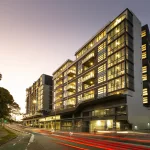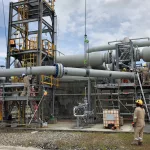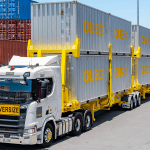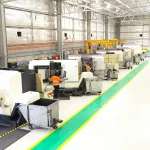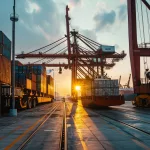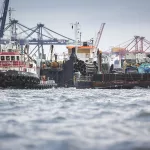Behind the hype of industry 4.0, new-age technologies have developed a somewhat controversial reputation amongst many industries across Asia. According to a report from Oxford Economics and Cisco, Technology and the future of ASEAN jobs, it is estimated that 28 million fewer workers across Indonesia, Malaysia, Thailand, the Philippines, Vietnam and Singapore (ASEAN-6) will be able to produce the same levels of output as today.
While this statistic reflects the substantial productivity gains anticipated from more widespread technology adoption, there is equally concern for numerous job roles, owed to the sheer scale of the reskilling challenge.
An abundance of new technology-driven occupations will emerge as the labour market evolves. Meanwhile, Oxford Economics and Cisco’s modelling also suggests that some 6.6 million workers across the region will see their current positions become redundant.
Evaluating the potential job displacement and income effects amongst the ASEAN-6, presented as follows is what we can expect in terms of employment opportunities across some of the region’s principal industries.
AGRICULTURE AND MINING
Agriculture and mining, two stalwart industries of the ASEAN-6, are expected to be hit the hardest by the emergence of new technologies. With job losses forecast at 10.1 million and creation at just 4.3 million, the sector is anticipated to contract 7.4 percent in terms of employment over the course of the next decade.
Despite this, productivity is in fact expected to rise as intelligent technologies such as artificial intelligence, autonomous machinery and smart sensors are deployed to a greater effect.
While this transition will indeed create new fertile ground for tech jobs in agriculture, particularly in the face of the region’s rapidly rising population (expected to reach 717 million by 2030), the number of opportunities for lower-skilled jobs, namely farmers, is expected to continue falling as efficient technologies emerge and rise to the fore.
MANUFACTURING
Unlike agriculture, the combined manufacturing workforce of the ASEAN-6 countries is expected to grow by 600,000 (or 1.4 percent) within the next 10 years.
The manufacturing industry will indeed suffer from similar problems to those experienced in the agricultural sector, including significant reductions in a number of lesser-skilled job roles. However, the rising demand for cost efficiencies, process optimisation, administrative improvements and alike is set to outweigh this.
As manufacturing plants increasingly look towards technologies such as the cloud, big data, robotics and automation in hope of achieving their efficiency/profitability ambitions, these new employment segments are set to flourish.
However, when considering that the regional population is expected to grow at 0.85 percent per year, this may actually equate to fall in the number of manufacturing jobs available per capita, indicating that technology may still be considered somewhat detrimental to the manufacturing industry.
WHOLESALE AND RETAIL
It is estimated that around 150,000 jobs will be created in the wholesale and retail industry every year for the next decade across the ASEAN-6 countries alone – a sector that will become a major beneficiary of the positive impact of increased technology adoption.
The ecommerce boom can be outlined as the major driver behind this. As the likes of Amazon and Alibaba continue to expand their reach and market share, the number of warehousing, distribution and logistics roles will increase monumentally, offsetting jobs cuts on the high street.
According to Mordor Intelligence, for example, demand for the warehousing industry is expected to rise 8.5 percent between 2018 and 2024, while 3.8 million new internet users are expected to come online every month in the region.
TRANSPORT AND TOURISM
Transport and tourism represents an industry with one of the greatest positive percentage changes.
Sector employment is forecast to expand 3.4 percent – 0.1 percentage points more than wholesale and retail – in the ASEAN-6. Travel and tourism currently accounts for over 10 percent of global annual GDP according to the World Travel and Tourism Council, an organisation that has also highlighted Asia as a new industry hub.
Here, the growing role of internet is operating as a major driver of new revenue streams.
This in mind, businesses are investing in a multitude of alternate professionals, be it blockchain specialists in order to provide authentic digital booking experiences, web developers, coders, data analysts for sales functions, or content/social media managers for marketing purposes.











